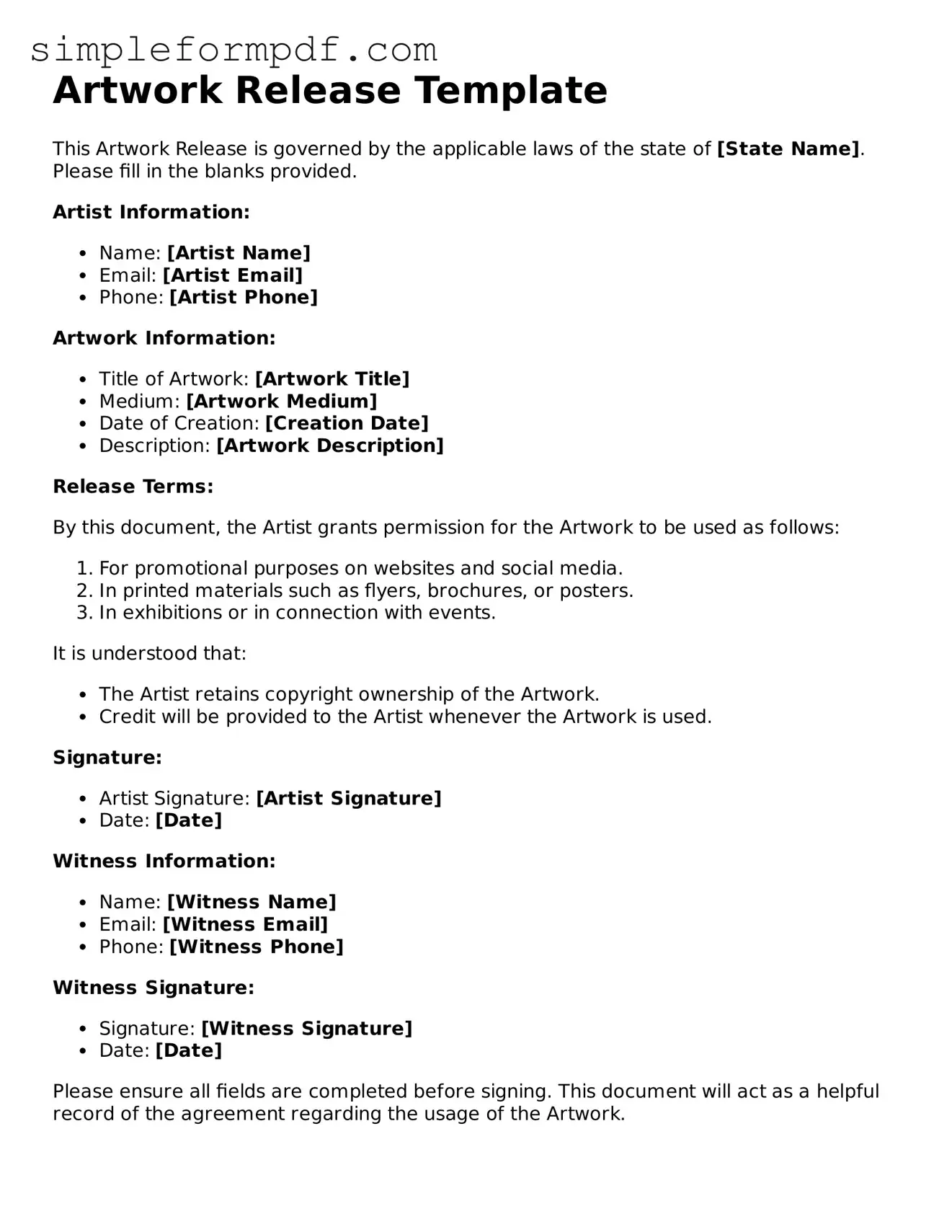Artwork Release Template
This Artwork Release is governed by the applicable laws of the state of [State Name]. Please fill in the blanks provided.
Artist Information:
- Name: [Artist Name]
- Email: [Artist Email]
- Phone: [Artist Phone]
Artwork Information:
- Title of Artwork: [Artwork Title]
- Medium: [Artwork Medium]
- Date of Creation: [Creation Date]
- Description: [Artwork Description]
Release Terms:
By this document, the Artist grants permission for the Artwork to be used as follows:
- For promotional purposes on websites and social media.
- In printed materials such as flyers, brochures, or posters.
- In exhibitions or in connection with events.
It is understood that:
- The Artist retains copyright ownership of the Artwork.
- Credit will be provided to the Artist whenever the Artwork is used.
Signature:
- Artist Signature: [Artist Signature]
- Date: [Date]
Witness Information:
- Name: [Witness Name]
- Email: [Witness Email]
- Phone: [Witness Phone]
Witness Signature:
- Signature: [Witness Signature]
- Date: [Date]
Please ensure all fields are completed before signing. This document will act as a helpful record of the agreement regarding the usage of the Artwork.
